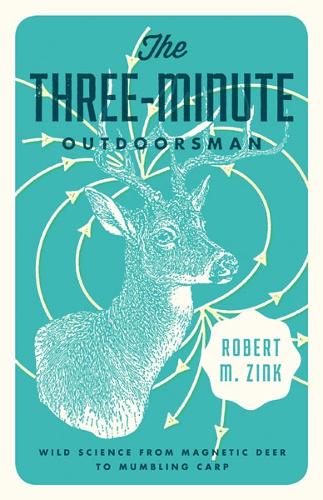
The Three-Minute Outdoorsman: Wild Science from Magnetic Deer to Mumbling Carp
(Paperback)
Publishing Details
The Three-Minute Outdoorsman: Wild Science from Magnetic Deer to Mumbling Carp
By (Author) Robert M. Zink
University of Minnesota Press
University of Minnesota Press
1st July 2014
United States
Classifications
General
Non Fiction
The Earth: natural history: general interest
Local history
Science: general issues
508
Physical Properties
Paperback
240
Width 140mm, Height 216mm, Spine 25mm
Description
A writer who humorously bridges the gap between esoteric information and nature as we have come to know it, Zink distills the latest news from the world of science into three-minute bursts of irresistible lore for the layman. In these brief, engaging essays readers will discover, for instance, how deer use the earth's magnetic field for orientation; how porcupine quills are advancing new ideas about delivering inoculations; and why deer antlers can model bone regeneration for amputees.How do predator-prey cycles get started Should we worry about black bear attacks in the woods Zink has the answers--often to questions we didn't think to ask but wish we had. This is the outdoors at its mysterious best, as the experience of nature and the findings of science combine to educate our sense of wonder and tickle our fancy--to say nothing of our highly unscientific funny bone.
Reviews
"Robert Zink may be the perfect outdoor nimrod, an awe struck beginner with an inquiring mind. This book makes an old woodsy veteran like me pause to think about the fascinating and mysterious world in which we go forth to hunt and to fish. . . . all the while pretending to be experts." Ron Schara, host and founder, Minnesota Bound
"Robert M. Zink will capture the hearts of outdoorsmen with a touch of science, a touch of common sense, uncommon wisdom, and a warm sense of humor. The Three-Minute Outdoorsman is a must read for anyone interested in nearly every aspect of the outdoor world." Babe Winkelman, Americas Premiere Outdoorsman
"This book answers both typical and exotic questions about nature in a plain and non-condescending manner." Foreword
Author Bio
Robert M. Zink is Breckenridge chair in ornithology at the Bell Museum of Natural History at the University of Minnesota, where he also serves as the curator of birds and is professor of ecology, evolution, and behavior.
